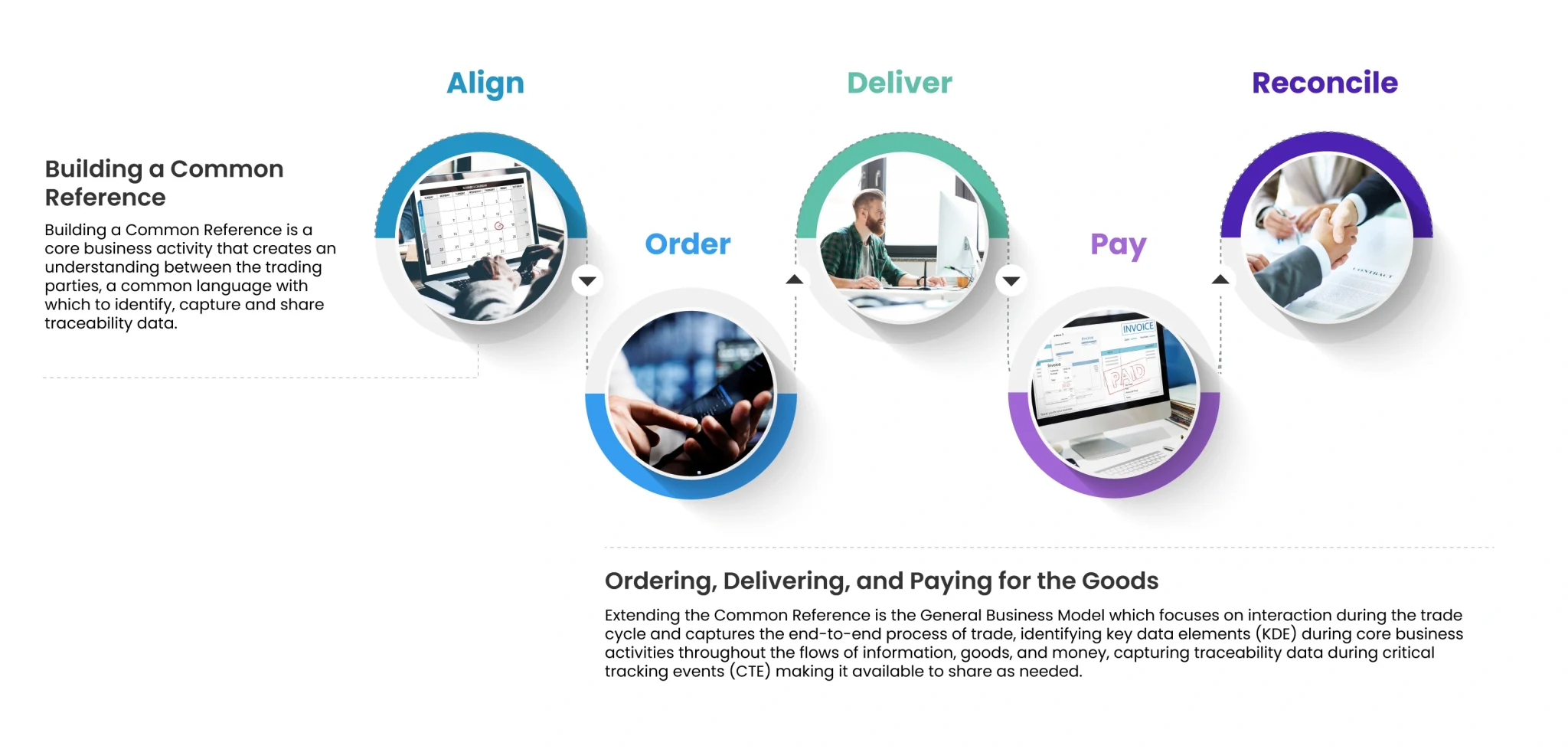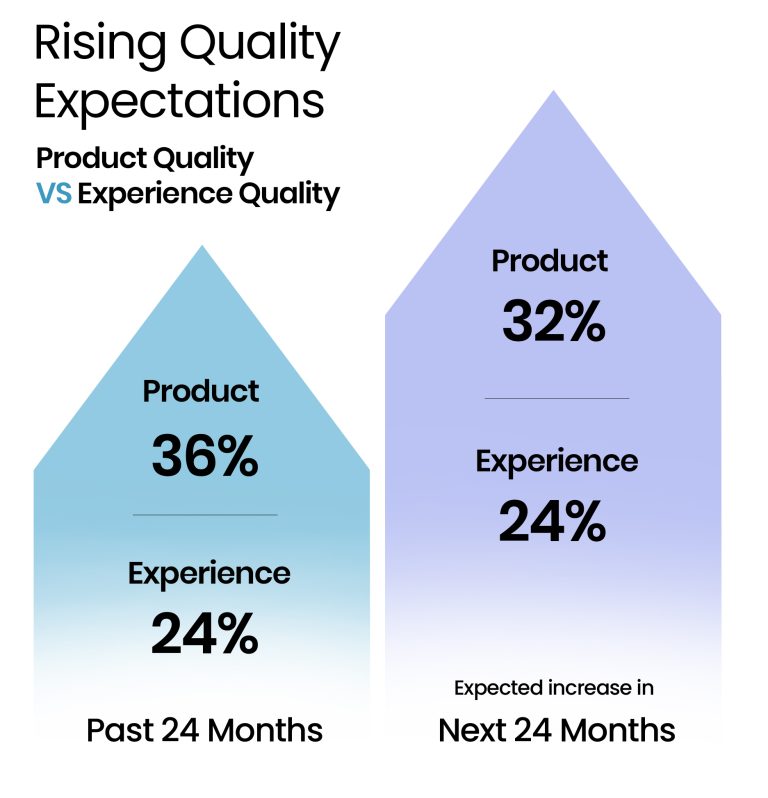Generative AI: The New Panacea
The Generative AI panacea is gaining momentum largely in part due to predecessor cure-alls such as GDSN, RFID and most recently blockchain. Each over the course of their own hype-cycles insisting on magic bullet status, each contending that the days of linear, one-directional supply chains are behind us, each a new panacea denouncing the previous that somehow fell short. The more recent blockchain arguments have been so pervasive that swaths of humanity have been conditioned to believe supply chain traceability and supply chain traceability solutions based on blockchain will forever change humanity, end pollution, stop global warming, and eliminate mean tweets with believers and devotees evangelizing the blockchain argument far and wide.
Arguments, quickly laid to rest by simply looking for the blockchain panacea that never arrived or by looking for that consumer who systematically checks the labels of his or her shirts to see exactly where the fibers that make up that shirt come from. Perhaps we should look for that blockchain sales rep who, at this point, must be driving into the sunset of a spectacular career, perhaps if we look hard enough on the beaches of south Florida, we can find him, and he can help us to see the decades of successful blockchain enablement that we all somehow missed. Maybe, we slept through the last decade and that blockchain sales rep is not to be found because we’re looking on a beach and not in the desert or a retirement home or maybe the blockchain panacea simply did not happen and maybe we are all looking at the beginning of just another panacea, the generative AI panacea.
Supply chain traceability nonetheless remains elusive and soon enough the (Artificial Intelligence) arguments will replace all of the blockchain panacea arguments and all will know that the new panacea has arrived. Much like its blockchain predecessor, the Artificial Intelligence Panacea will solve or at least claim to solve all of our issues by providing a remedy for every difficulty including supply chain traceability. It is entirely possible to imagine that many more activists than even the blockchain could muster will claim the Artificial Intelligence Panacea has arrived while touting the benefits of something they have not experienced in their lives, in their business, or on their phones.
Even as this article is being compiled, publishing companies that promote crypto awareness – the big money promoters for blockchain investors have been putting forth articles all but debunking their own investigative journalism of days no longer present on blockchain technologies and have begun the inevitable shift to the Generative AI panacea. One such article insists that AI models will grow massively in 2023 while simultaneously emphasizing the value of smaller, more precise models, which seems to take both sides of an argument. It appears, even for the uninitiated the shift from blockchain to generative AI is occurring in real time.
Retrieval-based traceability
If we are to make a business case that businesses must now adopt resilient, transparent, and perhaps circular value chains to stay competitive because of shifts in the landscape then we must also make the case that these organizations must lean on technology to do so which also means, by extension, bringing into view retrieval-based traceability. Retrieval-based traceability infers a reliance on traceable resources and not on panacea. Retrieval-based traceability infers incorporation of a localized knowledgebase and incorporation of all of the predecessor cure-all projects including efforts in GDSN, RFID, even Blockchain and AI; an approach that brings operational benefits and resolves the universal search for increased visibility.
Organizations planning to adopt retrieval-based traceability must thereby rely on supply chain traceability solutions to manage the complexities of supply chain traceability, retrieval-based traceability makes these truths apparent:
- Traceability systems are powered by traceability data
- Traceability data is generated through execution of a variety of business processes carried out by each organization
- When we extend the view of traceability data generated through execution of a variety of business processes carried out by each organization to the full supply chain view, it becomes clear that each organization manages its own set of retrieval-based traceability data with supply chain traceability solutions
If we concede Point 1 that supply chain traceability systems are powered by retrieval-based traceability data and do not rely solely on the latest tech fad, panacea including blockchains, GDSN, EPCIS, and RFID. We must then concede that advanced supply chain traceability solutions , solutions that enable businesses to monitor their supply chains in real-time and ensure transparency to make data-driven decisions rely on Point 2; retrieval-based traceability data generated through execution of business processes and we can conclude the generative AI ONLY works when retrieval-based traceability data is present. In short, insights form in the presence of data.
If we concede Points 1 and 2, then we must also concede that the scope of the retrieval-based traceability process in any industry model begins with the initial interaction between the trading parties which means neither generative AI nor blockchain technologies can help us. The former being dependent on a collection of data and the latter being dependent on event processing according to experts, it’s no wonder that everyone over the past two decades flocked to the newest tech panacea available.
Traceability systems are powered by traceability data

Traceability systems are powered by traceability data: The Generative Business Model
If Traceability systems are powered by traceability data, then supply chain traceability systems are powered by retrieval-based traceability data not generative AI and certainly not blockchains. While both might prove valuable and block chains might prove invaluable for shared data storage, the scope of supply chain traceability models most certainly begin with the initial interaction between trading parties at the very beginning of the trade cycle.
Companies seeking supply chain traceability for their customer base who have expressed interests in sustainability for example will not be easily satisfied by the promise of a panacea having previously invested in several. Many will immediately recognize the hype cycle and having been through several will wait for things to pan out. The reality of supply chain traceability is that manufacturing entities generate retrieval-based traceability data through purposeful execution of integrated business processes. When this view is extended throughout the supply chain it becomes apparent that each entity engaged in supply chain traceability manages its own set of retrieval-based traceability data.
Initial Contact between the Parties
Manufacturing companies and their suppliers must engage in ‘initial contact’ steps in order to set up an initial business understanding before supply chain traceability can proceed. While initial contact processes may vary, the most efficient path to success is for manufacturing companies to contact all of their active suppliers at once. Such plans must be carefully executed and extended by a team of experts in data collection and storage as one might find attached to supply chain traceability solutions. The initial contact process must include precise transactional guidance to ensure that retrieval-based traceability elements are engaged throughout the process so they can be provided and referenced throughout the process that ensues.
Building a Common Reference
Data alignment between manufacturing companies and their suppliers must include the exchange and storage of succinct item data (catalog) and organizational data through a business process that must include the regular exchange and storage of this data such that it is available for use in latter business processes including manufacturing, procurement, storage, and delivery. Engaging retrieval-based traceability elements such as GLNs and GTINs at the enterprise level and implementing GLNs and GTINs in Order-to-Cash transactions for example is a good way to start thinking about referenceable retrieval-based traceability elements that will be used later in the supply chain traceability solution. While GLNs and GTINs may be considered by many to be the most efficient data keys; style, color, size and DUNS numbers work just as well in some industries; the point being the path to a systemic understanding of one’s supply chain is dependent on retrieval-based traceability data, which includes the unique identification of items and locations.
Evaluating and Approving Goods for Procurement
Manufacturing Companies will then have to undertake an internal process for evaluating and approving goods for procurement based on retrieval-based traceability elements at the unique item level, which will extend to a lot and batch level and perhaps serialization in some manufacturing actives in order for supply chain traceability to proceed. Evaluating and approving goods for procurement in order to be practical will take place in supply chain traceability solutions. Evaluating and approving goods for procurement must include some measure of business process automation, succinct messaging, and precise transactional guidance to ensure that retrieval-based traceability elements are present and exchanged between manufacturing companies and their suppliers on an ongoing basis. Business process automation that allows for an approval process while linking batch and lots with internal catalog items for use in the manufacturing process such that they can be authorized for requisition and available to procure within the manufacturing entity.
Price/Sales Catalog Business Messages
Manufacturing Companies must include Price/Sales Catalog messaging where trading partners begin the process of trade by exchanging basic business information related to the goods traded. Price/Sales Catalog business message sent by the supplier to the buyer of the expected product line, includes trade item details such as unique item identification, product description, introduction, and discontinuation dates. The key data and retrieval-based traceability elements in this exchange include unique item identification structured as data carriers such as a GTIN, UPC, or in the case for many Textiles & Apparel Manufacturing Companies; a combination of retrieval-based traceability elements, style, color, and size.
Price/Sales Catalog messages are typically sent from a supplier’s system capable of supply chain traceability to a buyer’s system also capable of storing retrieval-based traceability elements consistent with supply chain traceability in order to provide the buyers with information regarding products and product lines and traceability elements. Price/Sales Catalog messages are not considered as ‘one-time’ responses to a buyer’s request, rather Price/Sales Catalog messages should be considered as updates to the buyer’s internal catalog of supplier product information, ongoing and regular. In terms of supply chain traceability Price/Sales Catalog messages may therefore be sent from the supplier to the buyer whenever the supplier’s product line changes. The Buyer, by maintaining an internal catalog of a supplier’s products containing retrieval-based traceability therefore becomes more adept, knowledgeable, and better at identifying trade ready goods for the manufacturing process.
Report of Test Results Business Message
The Report of Test Results business message supports supply chain traceability by supporting sellers, distributors, and testing services; the results may be required in support of consumer product safety or as part of a continuous improvement program or a product development process. The Report of Test Results business message relies on retrieval-based traceability elements and is used to transmit the results of independent tests performed to satisfy a business, product, or process requirement and in support of supply chain traceability. Retrieval-based traceability data contained by Report of Test Results business message include the unique item identification as a data key, a product description, testing information, inspection data, certification data, and in some cases process control and other measurements, which might be required by industry. Steel manufacturing, underground pipelines, utilities, are among those industries interested in supply chain traceability. Textiles & apparel manufacturing companies are particularly interested in supply chain traceability for organic cotton and fiber traceability which must include retrieval-based traceability elements to be successful, RFID or EPCIS cannot manage it independently.
The buyer’s internal catalog, requisition and approval processing
While supply chain traceability processes vary by organization, the exchange of Price/Sales Catalog business messages and the Report of Test Results business message are critical to the procurement process and particularly so in requisition and approval processes. The procurement process may therefore begin with one or more approval workflows, workflows that rely on retrieval-based traceability elements stored in supply chain traceability solutions. The approval process might include a requisition process and a Report of Test Results approval process. Manufacturing companies may choose to purchase products and test them internally by leveraging internal labs or then send them out for independent testing to external labs in order to gather retrieval-based traceability elements. Manufacturing companies may also require samples be sent by the supplier to independent laboratories at their own expense in order to gather retrieval-based traceability elements for supply chain traceability. In either scenario, manufacturing companies will have to (1) be prepared to define an internal approval process for the purchase of trade goods and (2) be prepared to define to organize a procurement process to account for and track purchases, shipments and costs related to subsequent transactions in the calculation of total costs in their supply chain traceability solution.
Ordering, Delivering, and Paying for the Goods
Manufacturing Companies today are likely to embark on a hype cycle endeavor, an endeavor which might include Generative AI, GDSN, RFID, block chain, or something which influencers have been conditioned to believe and promote and that manufacturing companies are likely to engage.
Manufacturing Companies engaging in trade will most certainly leverage an ‘Order to Cash’ or ‘Procure to Pay’ process in the production of goods for sale. These manufacturing companies, regardless of industry, should consider the extent to which retrieval-based traceability elements are present, stored, and available.
Manufacturing companies regardless of industry must consider the extent to which their ‘Order to Cash’ or ‘Procure to Pay’ process includes supply chain traceability.
If we believe the influencers, if we believe the hype, if we believe the days of a linear, one-direction supply chains are behind us and if we are to do our part as prescribed by these experts, then our supply chain traceability solutions must accommodate ‘Order to Cash’ or ‘Procure to Pay’ processes that include retrieval-based traceability elements.
Built for industry experts, PartnerLinQ stands out as the premier supply chain platform that redefines supply chain traceability, digital connectivity, end-to-end visibility, and decision intelligence. PartnerLinQ’s innovation empowers real-time decision-making, fosters collaboration with business partners, and enhances predictability within complex multi-enterprise supply chain networks. PartnerLinQ is where retrieval-based traceability elements are present, stored, and available out of the box, not as an afterthought but as a matter of practice. Harnessing the power of cloud technology, PartnerLinQ ushers in a new era of supply chain efficiency, optimization, and performance that improves your bottom-line, nurtures sustainable growth and includes supply chain traceability.

 PartnerlinQ
PartnerlinQ



















